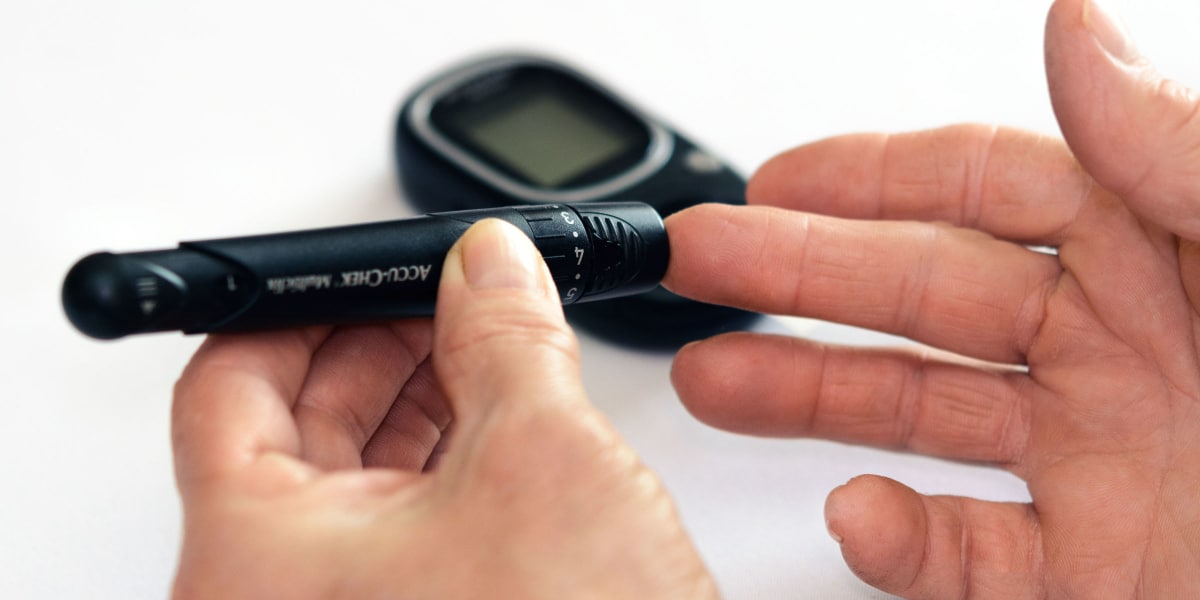November is National Diabetes Awareness Month, a time when the health community turns to promoting awareness of the signs and symptoms, as well as management and prevention, of both type 1 and type 2 diabetes.
Sometimes called “adult-onset” diabetes, type 2 diabetes is seen more frequently in children than it was in the past.
An estimated 10 percent of the American population has diabetes, with that number rising to approximately 25 percent of the population aged 65 and older. Unfortunately, an estimated 1 in 4 people with diabetes doesn’t know they have the condition, which can lead to dangerous health conditions for the individual.
In some cases, diabetes won’t be apparent until it reaches a critical point, meaning family members and caregivers must carefully watch their loved ones for signs that they may have type 2 diabetes.
Here’s some important information for caregivers and family members who may suspect type 2 diabetes in an older adult:
Signs of Type 2 Diabetes
Many of the signs of type 2 diabetes develop slowly and, in isolation, don’t seem to be worrisome. Some diabetics even live for years without knowing they have the condition.
Here are some things to watch out for:
- Increased thirst
- Frequent urination
- Increased appetite
- Unintended weight loss
- Fatigue
- Blurred vision
- Slow-healing sores
- Frequent infections
- Areas of darkened skin, usually in the armpits and neck
If you notice any of these symptoms in the person you care for or in a loved one, especially if you notice them over a prolonged period of time, schedule a doctor appointment as soon as possible.
Risk Factors of Type 2 Diabetes
Type 2 diabetes can happen in any person from any walk of life at any age, but there are some risk factors that may make your loved one more susceptible to developing the condition.
Some common risk factors for type 2 diabetes include:
- Weight: Being overweight is a major risk factor for developing type 2 diabetes, but people of normal weight also can develop the condition.
- Fat distribution: Those who carry their weight mostly in their abdomens are at a greater risk of developing type 2 diabetes. This is especially true for men with a waist circumference over 40 inches and women with a waist circumference over 35 inches.
- Inactivity: If you’re inactive, you’re more likely to develop type 2 diabetes.
- Family history: If you have a family member with type 2 diabetes, especially a parent or sibling, your risk of developing the condition is greater.
- Race: People of certain races – black, Hispanic, Asian, and Native American – are more likely to develop type 2 diabetes.
- Age: Your risk of developing type 2 diabetes increases as you age, especially once you’re over 45. This tends to be linked to those who exercise less, lose muscle mass, and gain weight as they age.
- Prediabetes: If your blood sugar has tested as high, but not high enough to consider you diabetic, you are at greater risk for developing type 2 diabetes down the line.
- Gestational diabetes: For women who developed gestational diabetes during pregnancy, or who gave birth to babies weighing more than 9 pounds, their risk of type 2 diabetes is higher.
- Polycystic ovarian syndrome: Women with polycystic ovarian syndrome are at greater risk of developing diabetes.
Managing Type 2 Diabetes
Type 2 diabetes is a chronic condition without a cure, so someone diagnosed with type 2 diabetes is never going to just “get better.”
However, with careful management, the need for diabetes medication or insulin therapy may be reduced.
Here are some things you can do to help your loved one manage their type 2 diabetes:
- Maintain a healthy diet. Being overweight can increase a person’s risk of developing type 2 diabetes, and certain foods can contribute to unregulated blood sugar. Help your loved one maintain a diet full of fresh produce, lean proteins, and healthy fats and avoid processed, sugary food as much as possible.
- Exercise regularly. Your loved one doesn’t have to become a gym rat to see positive effects from exercise. Simply being more active than they were previously can help them manage their weight and their diabetes. Some ways to do this include going on long walks a few times a week, joining a fun group fitness class, or taking up a new sport.
- If they smoke, have them quit. Smoking can contribute to overall poor health and body function, which can impact the body’s ability to maintain a healthy weight and manage diabetes.
- Help them improve their sleep. Many older adults find that their sleep patterns naturally change over time, but going prolonged periods of time with insufficient sleep can decrease the ability of the boy to function well. Help your loved one develop a solid bedtime routine, avoid the television in bed, and purchase room-darkening curtains or noise machines if necessary.
Skilled In-Home Care in Central Maryland
Helping an older loved one manage a chronic condition such as type 2 diabetes can be stressful and time-consuming. At Advanced Nursing & Home Support, we work hard to give your loved one the care and attention they deserve to keep them healthy for years to come. Call today for a consultation!











